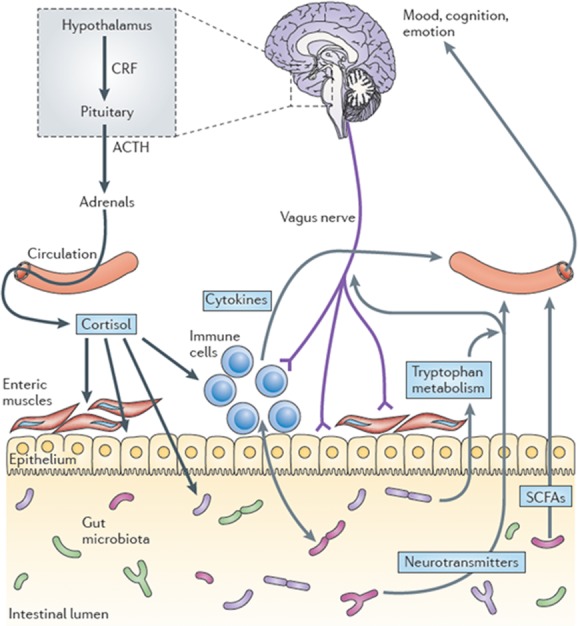Fig 4.

Pathways involved in bidirectional communication between the gut microbiota and the brain. Multiple pathways exist through which the gut microbiota can modulate the gut–brain axis. They include endocrine (cortisol), immune (cytokines), and neural (vagus and enteric nervous system) pathways. The brain recruits these same mechanisms to influence the composition of the gut microbiota, for example, under conditions of stress. The hypothalamus–pituitary– adrenal axis regulates cortisol secretion, and cortisol can affect immune cells, alter gut permeability and barrier function, and change gut microbiota composition. Conversely, the gut microbiota and probiotic agents can alter the levels of circulating cytokines, and this can have a marked effect on brain function. Both the vagus nerve and modulation of systemic tryptophan levels are strongly implicated in relaying the influence of the gut microbiota to the brain. In addition, short-chain fatty acids (SCFAs) are neuroactive bacterial metabolites of dietary fibers that can also modulate brain and behavior. ACTH, adrenocorticotropic hormone; CRF, corticotropin-releasing factor. From Cryan and Dinan.57
